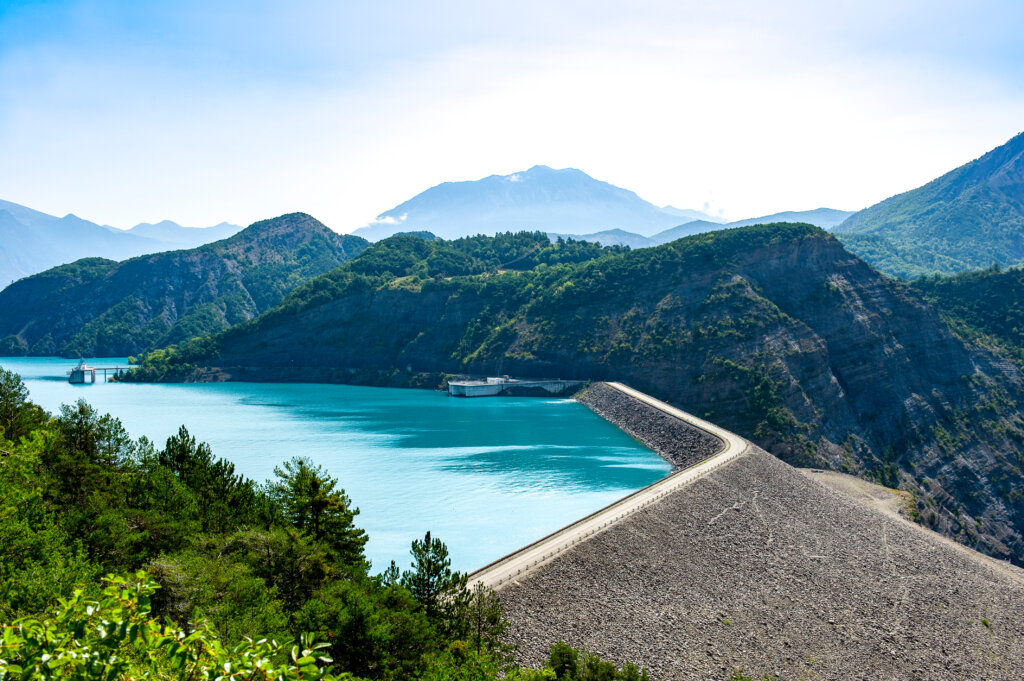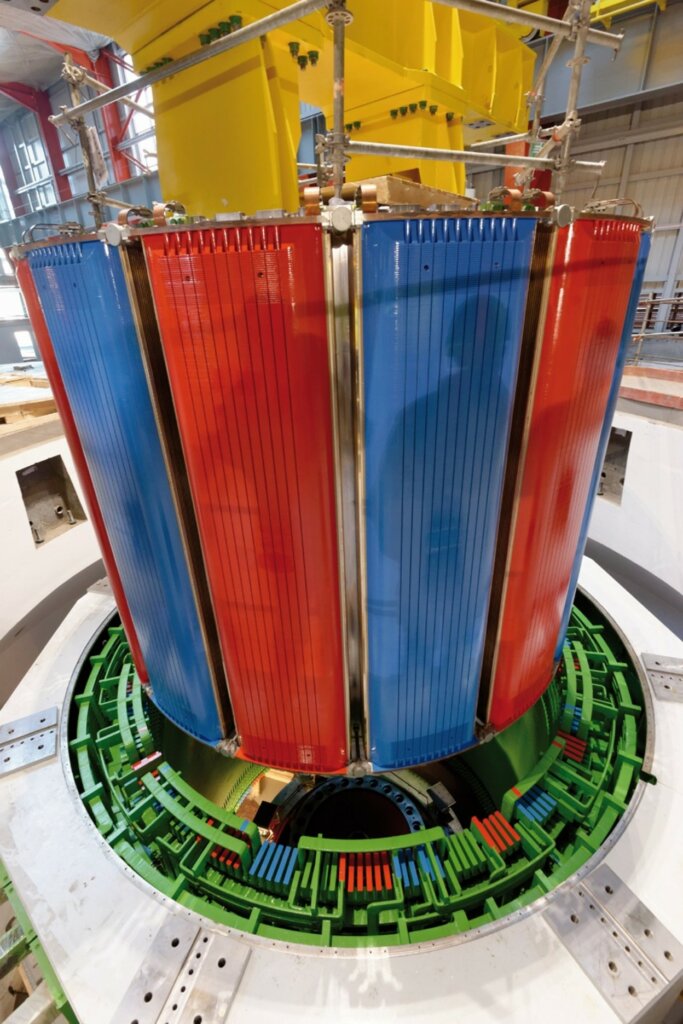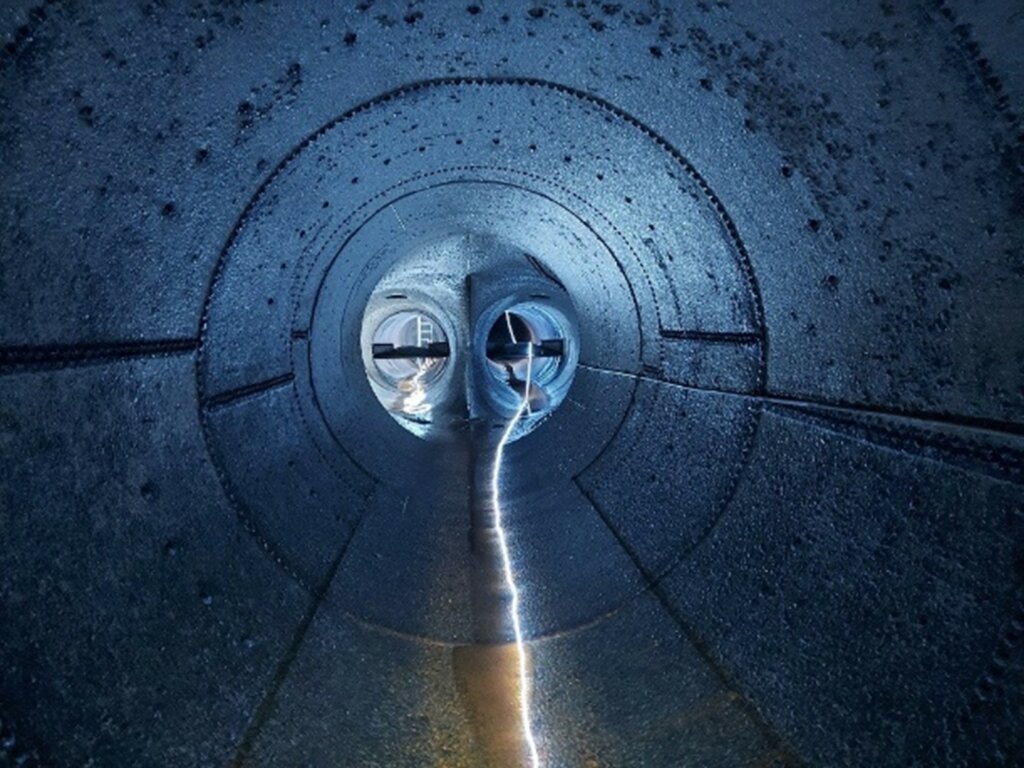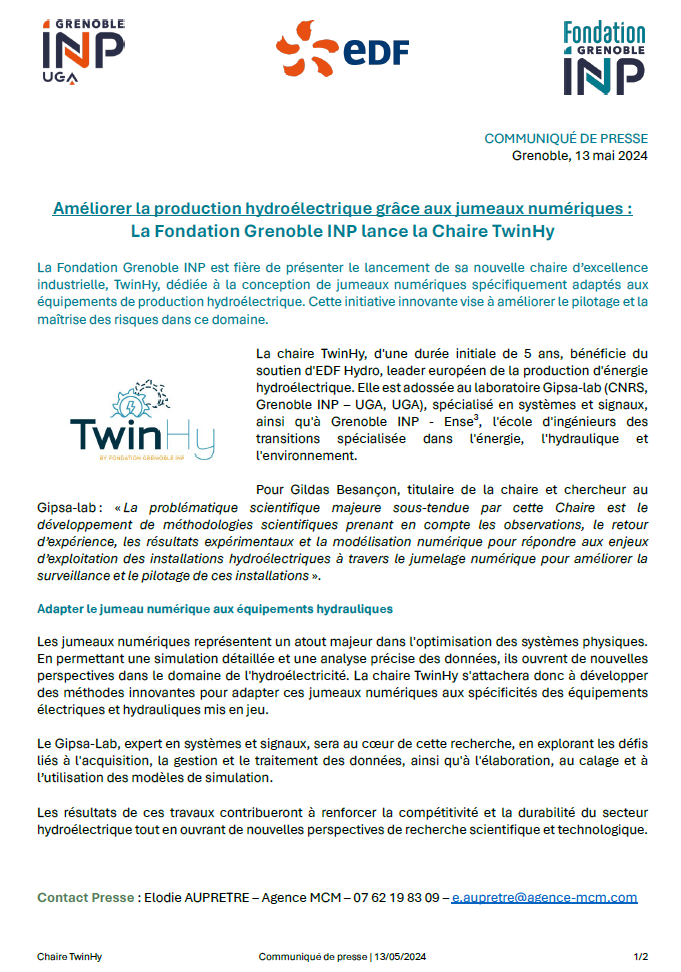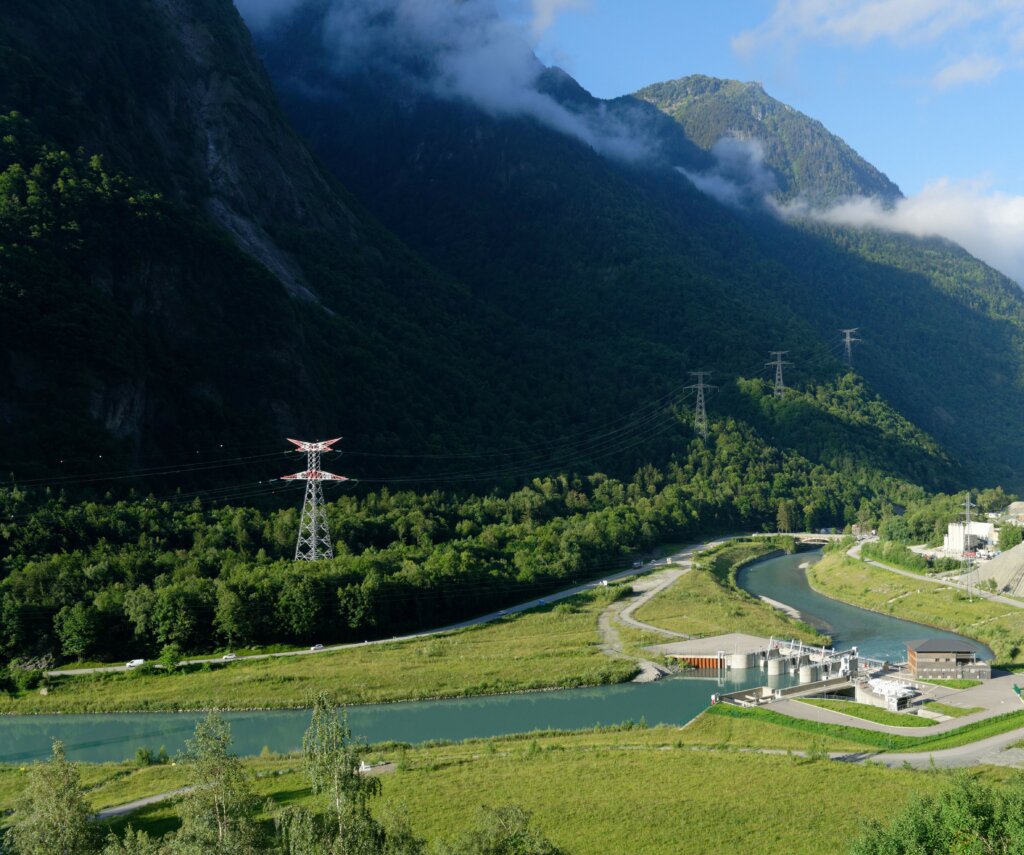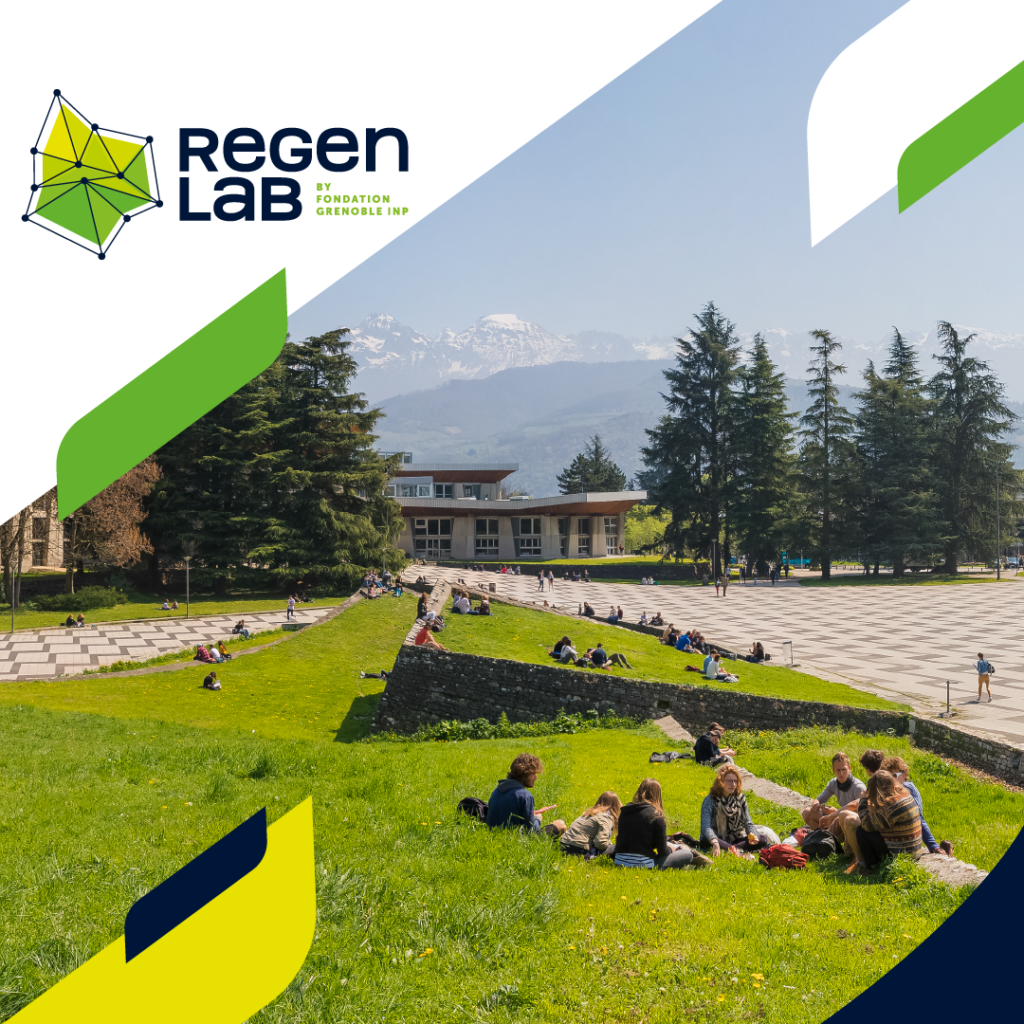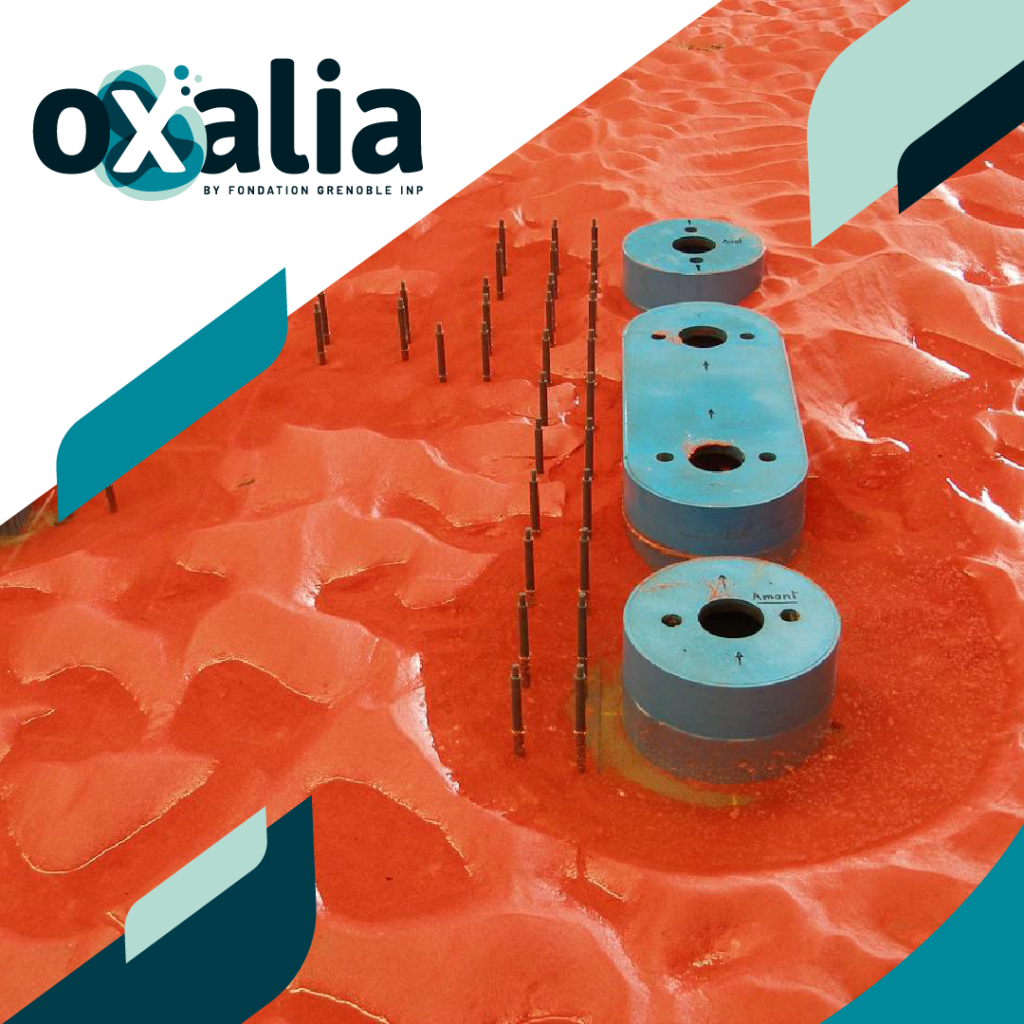Development of scientific methodologies to improve the operation of hydroelectric facilities, using the digital twin as an aid to monitoring and controlling these facilities.
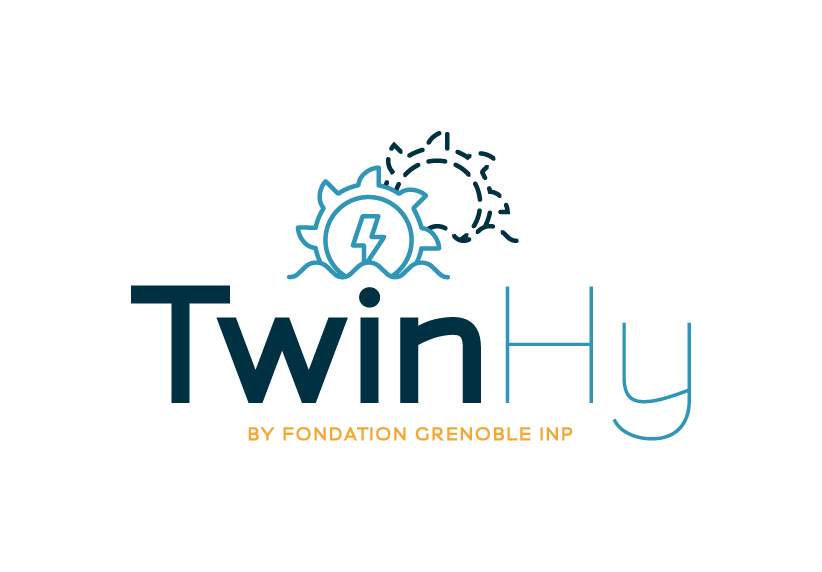
The aim of the TwinHy Chair is to conduct research into the challenges posed by the digital twin in hydroelectric production. At the same time, it aims to provide training and education related to this expertise. The major scientific challenge underpinning this Chair is the development of scientific methodologies that take into account measurements, feedback, experimental results and modeling (physical and numerical) to meet the challenges of operating hydroelectric facilities.
In an industrial and societal context where EDF Hydro is in charge of producing electrical energy from hydraulic resources, the TwinHy Chair aims to develop knowledge, methods and tools to improve the monitoring of various hydroelectric facilities and optimize their control and risk management. This is done with a view to adaptation, improvement and innovation, taking into account research challenges in the modeling and estimation tools to be used.
In terms of methodology, the TwinHy Chair focuses on the development and exploitation of digital twins. Digital twins are virtual clones of physical systems or processes, evolving synchronously with their real-life counterparts. A digital twin thus assumes the existence of a digital model coupled to the object it reproduces, fed continuously with real data from sensors. This approach enables advanced monitoring and control of equipment, providing a virtual replica in real time and facilitating anomaly detection, optimization of control strategies and prediction of potential degradation.
Cette chaire est portée par la Fondation Grenoble INP grâce au soutien de plusieurs entités EDF Hydro : DSID, CIH et DTG, ainsi que EDF R&D.
Photo credits
Christophe Huret
Pierre Jayet

Gildas Besançon
Our missions
- Conduct research into the construction and use of digital twins, considering the context of hydroelectric power generation
- Develop scientific methodologies to meet the challenges of operating hydroelectric facilities
- Contribute to improving the monitoring and control of hydroelectric facilities
- Provide training related to this expertise
The Chair's founding partners and sponsors

Research and training areas
The Chair's activities are organized around methodological developments on digital twins and case studies in the operation of hydroelectric facilities:
- Dynamic modeling approaches for digital twinning
- Data management and processing for model development and calibration
- Implemented to monitor and optimize equipment operation
- Use and optimization of the digital twin in the context of hydroelectric generation

